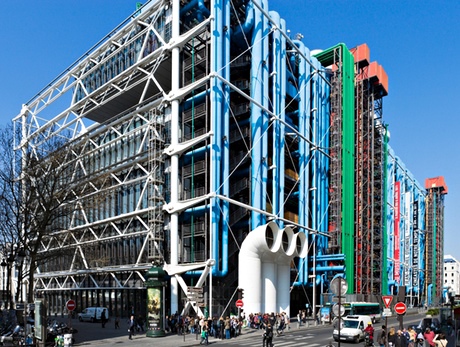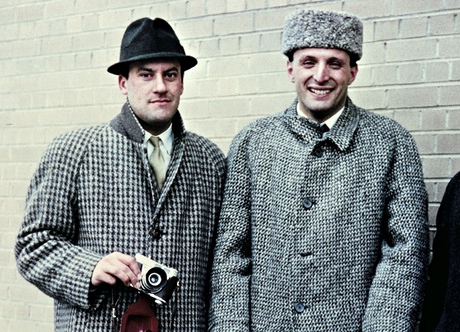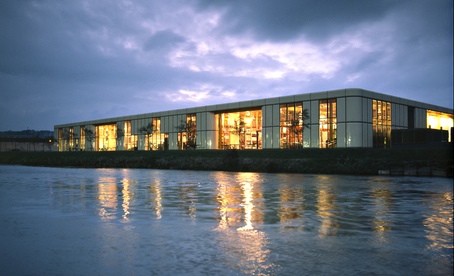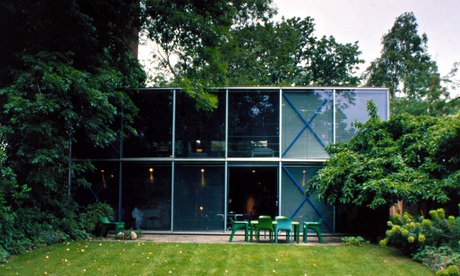Submitted by WA Contents
The Brits who built the modern world
United Kingdom Architecture News - Feb 09, 2014 - 14:07 8474 views
The outstanding generation of 1930s-born British architects led by Richard Rogers and Norman Foster are celebrated in a new TV series and RIBA exhibition

High-tech icon: the Pompidou Centre in Paris, designed by Richard Rogers with Renzo Piano in the 70s. Photograph: Alamy
There is always a dilemma in writing about the British tradition of architecture once called "high-tech", whose best-known protagonists include Richard Rogers, Norman Foster and Nicholas Grimshaw. On the one hand its achievements – the Pompidou Centre, the Hong Kong and Shanghai Bank, the Eden Project – are magnificent and world-changing, the result of epic efforts of will and daring. On the other hand its rhetoric can be head-bangingly simplistic and blatantly contradictory. Which, if it were only a problem of rhetoric, might not matter much, but it has physical effects in the real world.
To be specific: in the 1970s, when the high-tech style was forged, much was made of its power to create flexible and adaptable structures, with roofs hung off wires so that floors could be unimpeded by columns, and panels and pipes on the exterior that could be switched around at will. There was only ever modest evidence that such strategies worked as claimed, and plenty of examples where they did not. Equally, its protagonists would claim to be problem-solving and practical, yet Foster's Hong Kong tower was reportedly the most expensive building in the world. At which point it had to be justified as a work of art, which is something other than practical.

Norman Foster, left, and Richard Rogers at Yale in 1962. Photograph: Stirk Harbour + Partners
So too with a claim to be accessible and democratic, repeatedly made for this kind of architecture. There is nothing accessible about thehermetic glass ball that Foster designed for the mayor of London's headquarters, or the hyper-luxury, high-security flats that Richard Rogers designed at One Hyde Park. The Pompidou Centre was wonderfully accessible, but even its politics are more complicated than they seem. For all its radical look, its political purpose was to reinforce the conservative presidency of Georges Pompidou.
The question arises again with a three-part BBC4 series and an RIBA exhibition, The Brits Who Built the Modern World, which argues that a group of 1930s-born men have been "the most successful generation of architects Britain has ever produced". Exhibits A and B are Foster and Rogers, but there are also Grimshaw (the Eden Project and Waterloo Eurostar terminal), his former business partner Terry Farrell (the MI6 headquarters in Vauxhall) and Michael Hopkins, who once worked with Foster and later designed the Mound stand at Lord's and the MPs' office building, Portcullis House. All could at one time have been called high-tech, though Farrell would defect to the style's evil twin, postmodernism.
All were moved by the romance of technology, joined to a belief that architecture should enable, emancipate and engage. So Foster designed a facility for a shipping company in the London docks, where blue- and white-collar workers shared the same sophisticated spaces, while Grimshaw and Farrell designed a factory for furniture company Herman Miller, where external wall panels could be clipped on and off to suit changing needs.
All, argues the TV series, were shaped by their times: the war, followed by austerity and all-round grimness, followed by the joyful release of the Festival of Britain, followed by a revolutionary explosion of possibilities in the 1960s. They shared a British, going-on patriotic view of machines and industry, whereby the inventive brilliance of a Spitfire could help save the world. It was a view crystallised after the war by the Eaglecomic, in which the adventures of Dan Dare, Pilot of the Future, coexisted with cutaway diagrams of how machines worked. Always in the background were the triumphs of Victorian engineers, the Crystal Palace and the great railway stations.

The 1976 Herman Miller factory in Bath designed by Nicholas Grimshaw and Terry Farrell. Photograph: John Donat and RIBA Library Photographs Collection
Even as this heritage was celebrated, British industry was turning to dust and the United States appeared as a gleaming mirage of possibility. Foster, Rogers and Farrell all studied there and described the experience as life-changing. The Californian Case Study houses, which were attempts to harness technology to making better homes, were a huge influence on all the Britons and their works, including the steel-and-glass house that Michael Hopkins and his wife, Patti, designed for themselves in Hampstead, north London.
By the 70s, all these architects were designing definitive projects and were getting attention. They were given a stylistic label, "high-tech", only to be then hit by the powerful and contradictory forces of the 1980s, embodied by the emblematic figures of Margaret Thatcher and Prince Charles. If Thatcher preached American-style opportunity and enterprise, the prince argued for extreme forms of architectural traditionalism. Rogers and Foster found their options limited at home, and it became a journalistic trope that Britain created great architects but that they had to go abroad to achieve their best projects.

The steel-and-glass house that Michael Hopkins and his wife, Patti, designed in Hampstead, north London. Photograph: Joe Low/ RIBA Library Photographs Collection
After 1990, the wheels of fashion and fame turned again, and it's hard to argue with the claim about this being the "most successful generation". It can be measured in the very many hundreds of staff employed by these five architects, or in the airports, train stations, towers, parliaments, law courts, museums and masterplans that they have pumped out in the far east, the United States, Australia and Europe.
The reasons for their success, to this degree, are not instantly obvious, although talent, ambition, risk-taking and high degrees of professional organisation all played their part. But the triumph of high-tech is also testament to the power of imagery in the contemporary world. These architects attracted print and broadcast media from early in their careers, and the very simpleness of their pronouncements became an asset. Their works offer the look of modernity and democracy, and symbolise freedom, progress and problem-solving at the same time that they are – sometimes but not always – achieving these things. Which has proved a winning combination.
> via The Guardian
